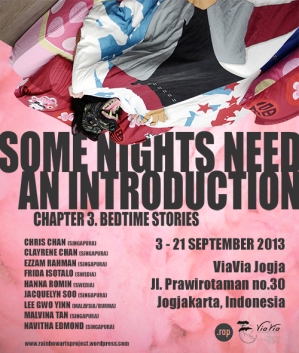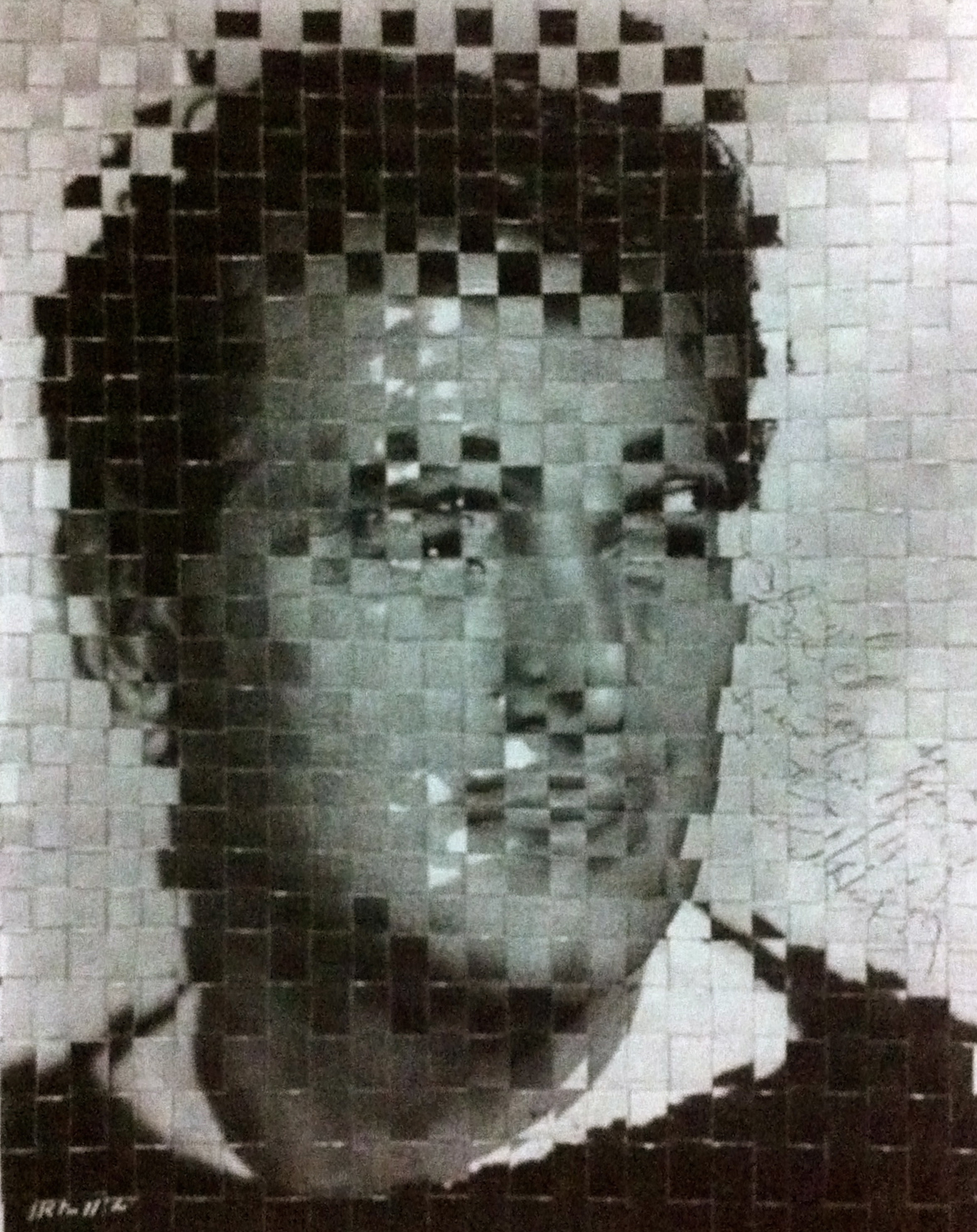“Once upon a time, there lived a boy. Each night before he went to bed, right after his father ordered him to, he timidly asked, “Father, can you read me a story?”. The father would not answer, because he was too busy but at the same time because the boy was too scared to speak loudly. He thought that it would not worth the risk to anger his old man, than to simply enjoy in the impermanent pleasure. He went to sleep and had stories self-told in his dreams. After all, he could sleep tight most of the nights. But some nights, only some of those rowdy thundering nights, he might needed a story-teller or two. “
This exhibition is an attempt to present to the audience what might happen to those some nights. Paying close references to queer culture where identity is unconventionally presented through visual imagery and story telling, the audience is put into the position of the boy. The artists as the storytellers and the works as narratives will present perspectives upon the theme of nocturnal characters, marginalized dreams and their impermanence. This is inspired by the space of ViaVia Café where situated in Prawirotaman Street, is a popular space for backpackers where the idea of visiting and impermanence is highly conveyed. As the curator, I hope that the audience can theoretically be the boy from the story, and once they are, some nights indeed need an introduction.
The artists and their works which have been selected for the third installment of the Some Nights Need An Introduction presents an impermanent realm for the viewers, which can be argued to be presented as visual dreams. Chris Chan, Clayrene Chan and Ezzam Rahman’s works tell stories of magic and imagination, childish and thoughtful at the same time. A princess, a werewolf and a superhero may be simply imaginations but during some nights, they could be real. These three works are presented to give a landscape, a basic constructive foundation towards the possibility of dream and stories which are simply permanent because aren’t we as we grow up, we leave these imaginations behind?
Maybe a different answer can be offered by Malvina Tan. As a quirky installation artist who believes in unicorns, I have personally asked her to create an installation work all around the café. Her works shall become the magical adhesive that glue all the works together within the space by emphasizing a greater sense of dreaming. I would like the viewers to see Malvina’s work as the bedroom of the exhibition. I hope, the pillow cases installed at the corners of the café can make one wonders, get hypnotized even and falls into a catnap.
Bedtime stories are after all not only fiction. Jacquelyn Soo and Frida Isotalo’s performative works bring this imagination to real time and space. However, it is a pity that these can only be presented as documentations. The charm of performance works is always the impermanence of the actions and whilst they were being recorded, I see this practice is similar like writing down a story and telling it afterwards. These two works appeal to me not only that they project certain facades of identities situated within unusual sites but also the ephemeral quality of the works. This then makes the story above questionable, as it questions the authenticity of the happenings, of whether dreams are simply images, told and recorded, or realities.
As a further response to Via Via as a site of transit, I have included a work by Hanna Rommin which is linked very closely to Isotalo’s. The two Swedish nationals spent six months in Japan and for the girls, it was an experience of the lifetime. This is simply projected on the enthusiasm felt at their works, although Rommin’s can be seen as an exciting nightmare instead of a good dream like Isotalo’s. I find it simply interesting that two white women, one of whom is undeniably queer in appearance, almost very eccentric, to be placed in a arguably very conservative surroundings of Japanese academic system. Isotalo’s videos were personal responses of the culture shock, which are pleasantly presented through the madness of the Lolita girl, for example. Rommin’s responds to the natural disaster that hit Japan in 2011 and as a form of both sympathy and compassion, she delivers this through the subject of food etiquette. I am challenging the idea of visitors or foreigners through their works. The validity of their responses can be questioned since the identity of the two artists as tourists. Have their dreams ended when they return back to Sweden? Would your dreams conclude as you leave Jogjakarta?
Reflections aside, the addition of Navitha Edmond’s collections of photographs of a transgender woman can be seen a summary of the exhibition. The photographs which are documentary in nature, reflect a certain era which can be foreign to many in today’s society. This is strengthened by the visuals which are stunningly sepia, placing the whole entire curated works into a less-known landscape, almost very romantic. The images become literary and invincible words narrate stories.
Lastly, is a proposal of the possibility beyond dreaming. Often associated with being nocturnal, as someone is awoken from a dream or when a story has ended, where does that leave the audience in. Lee Gwo Yinn’s stunning and emotional drawings of the last moments of his recently passed mother become an epilogue. Death has never become an answer but simply a possibility to continue dreaming or listening to stories.
An exhibition curated for and produced by rainbowartsproject, works which have been selected are queer, in such ways that they are quirky, sub-real and socially marginalized to a certain extent. Some of the artists invited are sexually queer themselves which have been translated onto their works but this exhibition proposes a definition upon queer identity from a much wider perspective. The boy from the story can be a werewolf, a princess, a superhero, a lady in pyjamas, a cosplayer, a transgender or even a dead woman.
As the curator of Some Nights Need An Introduction chapter 3. bed time stories, I would like to offer my audience, bed time stories. Stories which are told through images and visual narratives, translated to experiences and real life performance realm. Stories which present identity through various interpretations. However the journey does not end there, as the dream continues into the possibility of the stories to be re-told, again and again.
Kelvin Atmadibrata is a visual artist living in Jakarta, Indonesia. His concern upon gender and sexuality is reflected upon a long term initiative, rainbowartsproject, founded in 2009 with artists in Singapore. He continues weaving visual narratives through Some Nights Need An Introduction and hopes to collaborate with more people.









It makes me so happy to see this kind of exciting work happening, coming together and written about so thoughtfully. Keep it up!